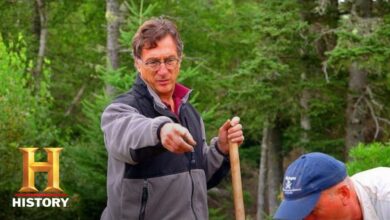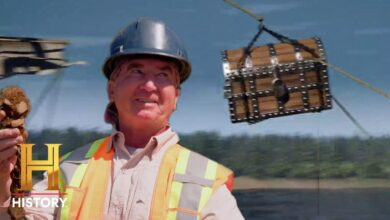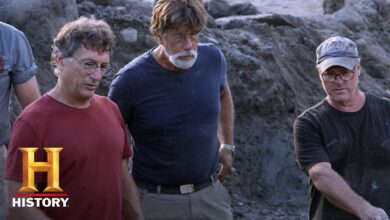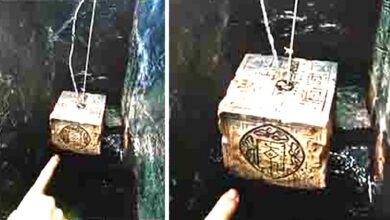The Curse of Oak Island: Burned Pottery Linked to Historic Artifact (Season 8) | History
The Curse of Oak Island: Burned Pottery Linked to Historic Artifact (Season 8) | History

AARON: Hey, Rick.
RICK: Hey.
I see you started.
Yeah, we’re getting through it.
RICK: OK.
AARON: Finding stuff right away.
So–
RICK: Oh, really?
–if you wanna get in there and keep pulling that back.
RICK: Right there?
AARON: Yeah, that little island there.
RICK: Yep.
And we’ll dump the buckets right on top of here.
Fair enough.
All right.
NARRATOR: As a new day begins on Oak Island, brothers Rick and Marty Lagina, along with their team, remain focused on their historic investigation in and around the triangle-shaped swamp, looking for more critical clues that could help solve a 226-year-old treasure mystery.
AARON: So moving upslope, I think our best hope is to follow the artifacts.
And stuff like coal, which we found along the road, is a really good artifact to find.
Sure.
You know, ceramics, they help us date the rope.
And anything that might be associated with a cart, with oxen, and coal, I think, are the big ones.
OK.
NARRATOR: Over the course of their discovery work this year, which was delayed by two months because of the COVID-19 pandemic, the team has found not only compelling evidence that the swamp was once an open harbor or a thruway between two islands, but also numerous discoveries suggesting a deliberately hidden operation to bring heavy cargo of some kind here.
These finds include a massive stone chips wharf, pieces of 15th century cargo barrels, and also a cobblestone pathway, one that runs northward along the eastern border of the swamp, which branches off somewhere into the uplands of the island.
Now with winter fast approaching, Rick, Marty, and the team are tirelessly continuing to track the pathway to its end, possibly to the location of the original Money Pit.
That looks [inaudible].
Pottery right?
Think so.
Looking at it, it looked like it had lines on it.
AARON: That’s annular ware, and the annular ware, we know, comes in early 1750s.
So we’re still pre-searcher.
Pre-searcher, absolutely.
MARTY: The pottery adds to the mountains of data that this road is very old and can’t be younger than probably turn of the 1700s to 1800s.
Can’t be any younger than that.
There’s a piece right there.
Do you want to see it in situ?
AARON: Oh, yeah.
Just going to give it a good wash.
Hang on.
Here’s another one.
AARON: Oh!
Similar level, too.
Yep.
Same thing.
This is a stoneware, too.
You can see before cleaning it, it’s been badly burned.
NARRATOR: Badly-burned pottery?
Oh, what the heck is that?
NARRATOR: Just one week ago, metal detection expert Gary Drayton, along with Rick and Marty’s nephew, David Fornetti, discovered a badly-burned iron rod, an iron rod that Dr. Aaron Taylor believes may have been part of a large sailing vessel.
Could this burned pottery be connected to that discovery?
And if so, is it another clue that the team is getting closer to discovering whatever caused the need for a carefully hidden pathway, or for that matter, an artificial swamp?




